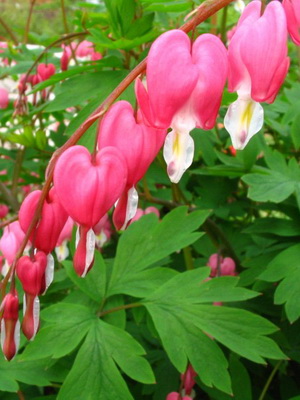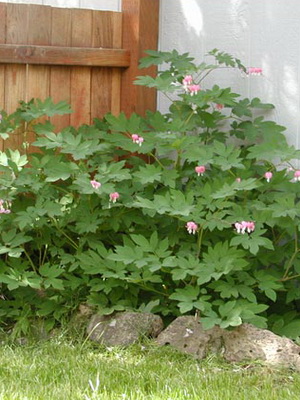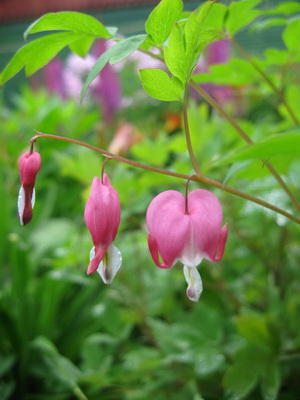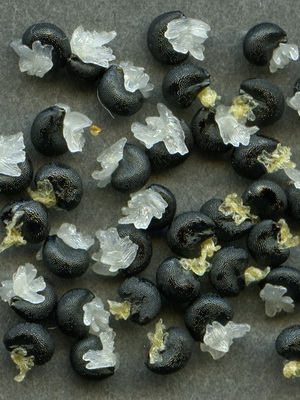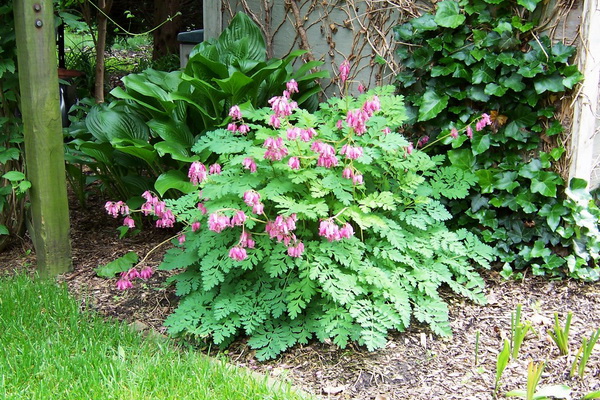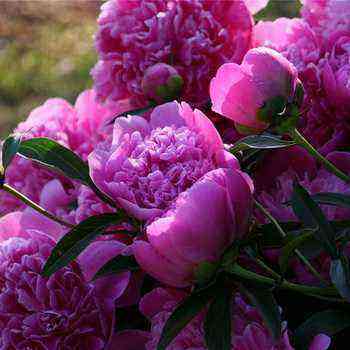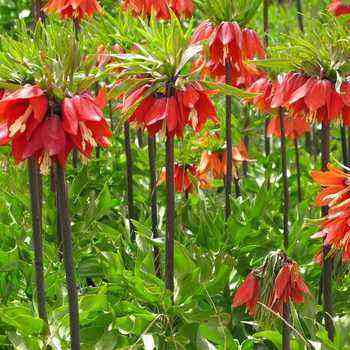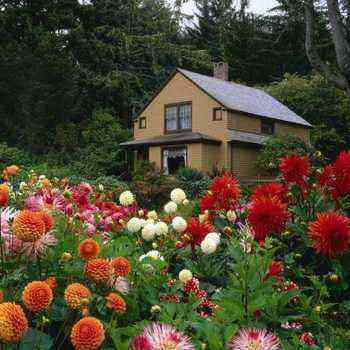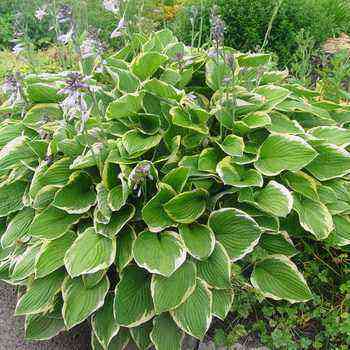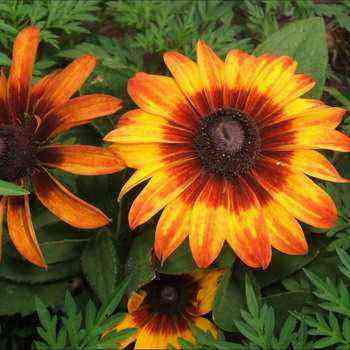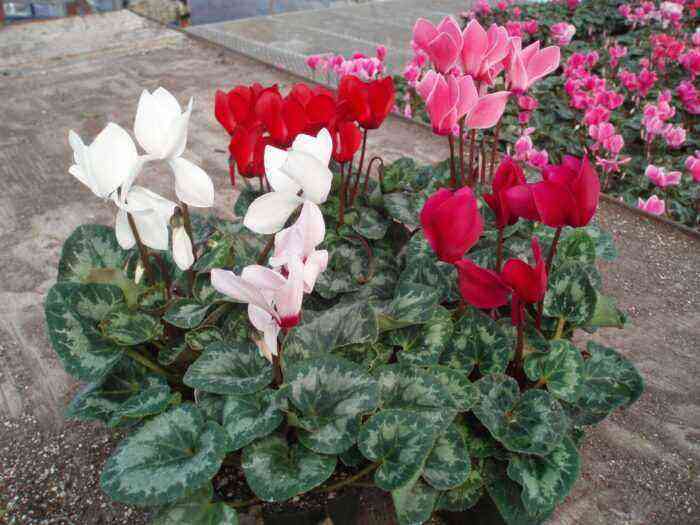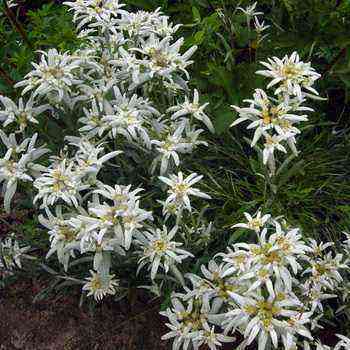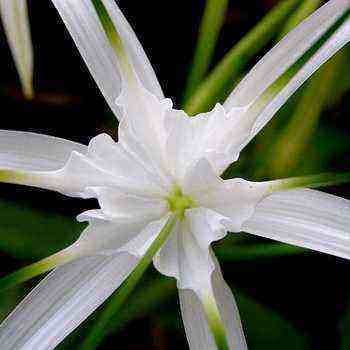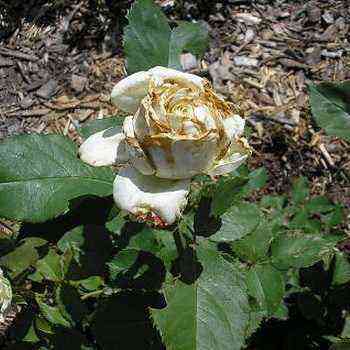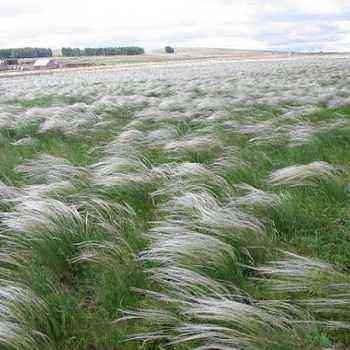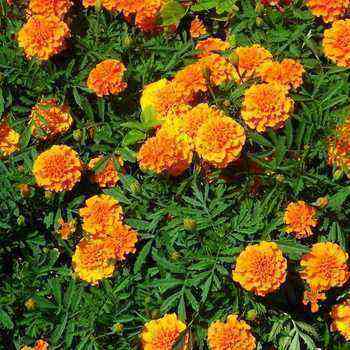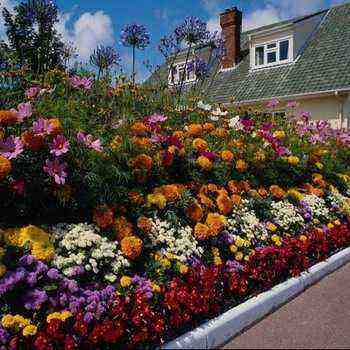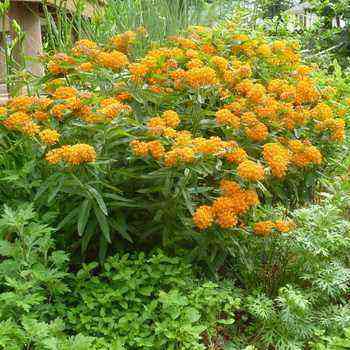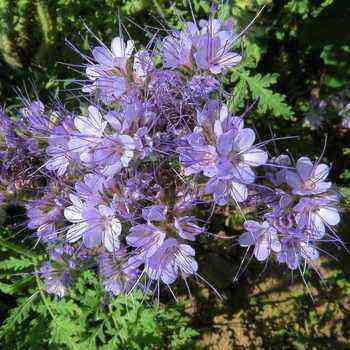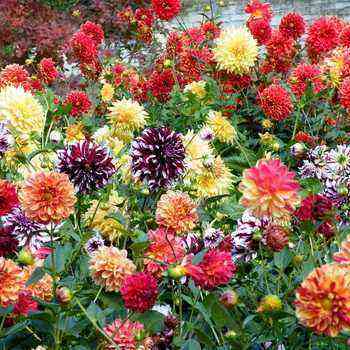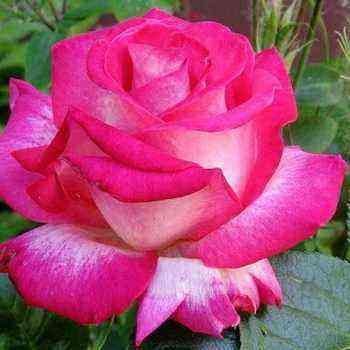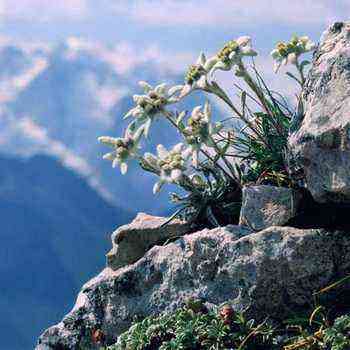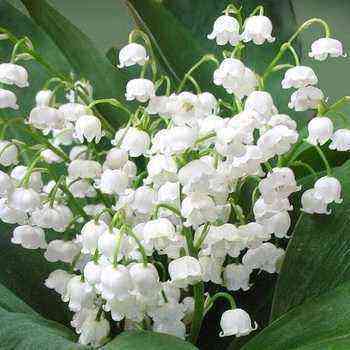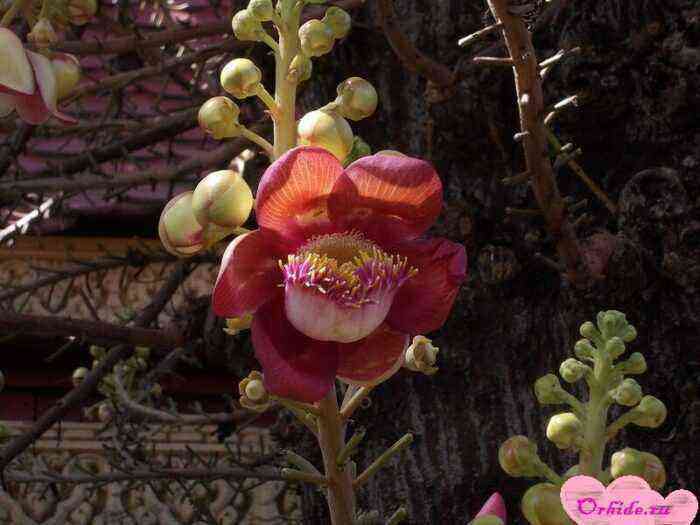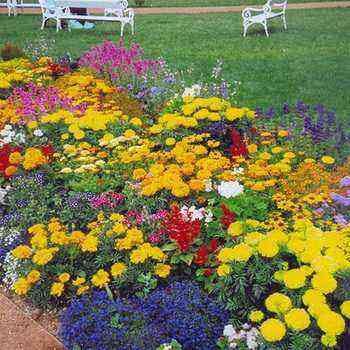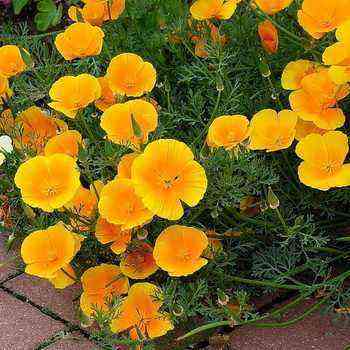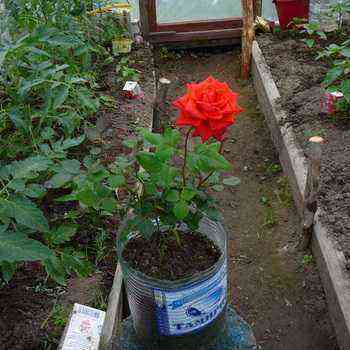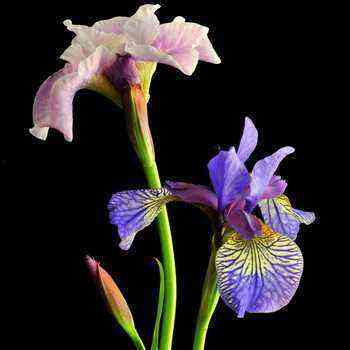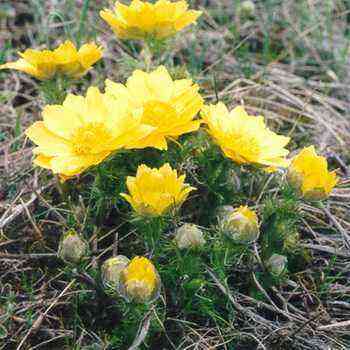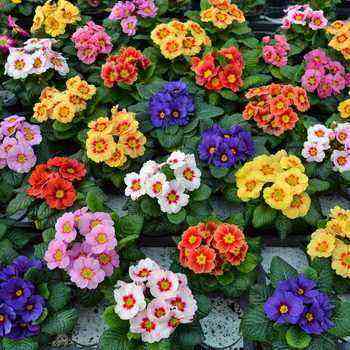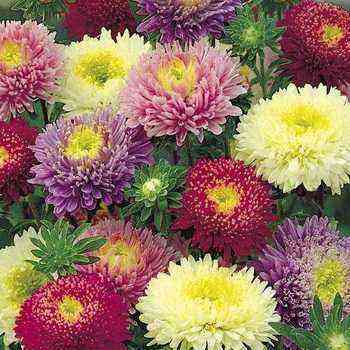
Description of the dicenter flower and its photo
Dicentra is a perennial taproot plant that has many popular names. For the original shape of flowers in the form of hearts, suspended on thin fluttering stems, the French called it “Jeannette’s heart”, the Germans – “the flower of the heart”, and the Russians – “broken heart.” Of course, such an unusual flower could not be ignored by various legends and beliefs about its origin.
On this page you can familiarize yourself with the photo and description of the dicenter, as well as learn about its cultivation.
The plant of the dicentra is quite tall, up to 80-90 cm, growing upward, not in breadth. The roots are few, but fleshy and brittle with few lateral ramifications. Throughout life, they are constantly formed from replacement buds located at the base of flowering stems. Therefore, every year the plant seems to bulge out of the ground.
Leaves pinnately dissected with jagged edges, delicate, bright.
Pay attention to the photo of the dicentra flowers – they are dark pink, flattened, heart-shaped, collected in spectacularly hanging inflorescences – brushes:
Flowering is abundant and long, up to 50 days due to the biological characteristics of the plant’s shoot formation. In the axil of each leaf there are buds, which, after the main shoot has faded, wake up and give lateral shoots. They end with an inflorescence. Thus, the bush is in constant bloom. After flowering, the decorative effect of the bush is preserved due to the leaves, which lose it only with the onset of frost.
The seed capsule is oblong, the seeds are shiny, black, also oblong. They have a high germination capacity only immediately after ripening.
The dicenter looks spectacular in single plantings against the background of a lawn or rabatok, as well as in groups. In combination with shrubs – chubushnik, barberry, tamarix, cotoneaster – the groups amaze with their originality and harmony.
The bleeding center also looks good as a curb plant.
Growing a dicenter flower: planting and care in the open field

The culture loves shaded areas and well-hydrated, nutritious soils. When caring for a dicenter flower, remember that it is frost-hardy, but not heat-resistant. Here the plant blooms longer and the flowers do not fade in the sun.
Planting can be autumn (September-October) and spring (April-early May). You should not be late with spring planting, because young shoots that grow intensively in spring are very fragile and break easily. The planting distances for purple dicentra are 25 cm, and 40-60 cm for the perfect one.
Care is normal, as for all other perennials.
From the second year of life, it is necessary to add earth, since the rhizome begins to be exposed.
Propagation of dicentra is done by dividing rhizomes or, rather, root cuttings. They are cut into pieces of 10-20 cm and planted in shaded places to a depth of 10 cm. The soil should be constantly moist, but not soggy.
Seed reproduction is also possible, but it is longer and does not always give an exact repetition of the maternal properties. Fresh seeds are sown in autumn. Seedlings have time to open into a warm greenhouse and are well protected from frost for the winter. Seedlings bloom in the 3rd year.
Dicentra is also valuable because it can give distillation in winter and early spring in indoor and greenhouse conditions. To do this, in the fall, bushes are dug out after the leaves die off and planted in large pots with garden, leafy soil and river sand in a ratio of 2: 2: 1. The pots are installed in a cool, but not freezing room. It is occasionally watered and kept like that until January. Then they are transferred to a room with a temperature of + 8 … 10 ° C and they begin to water more often and more abundantly.
When the plant has started to grow, the pots are transferred to a warmer room with a temperature of + 10 … 12 ° C and placed closer to the light. Watering is abundant and systematic. Feeding is useful, for which any fertilizers for indoor plants are suitable, which are given at intervals of 10-14 days. Flowering begins in February and lasts until April.
In May, the plants are planted in the ground. By the fall, they can again be used for distillation.


